Urban Flood Simulation Using MODCEL—An Alternative Quasi-2D Conceptual Model
Abstract
:1. Introduction
2. Urban Floods and Mathematical Modelling Importance
- The urban drainage systems often evolved through trial-and-error modifications after the systems were initially constructed;
- Changes in perspective of urban drainage in a city were most often caused by disease outbreaks, scientific discoveries, or technical advances in planning, design, and construction.
3. Urban Drainage Modelling
4. Urban Flood Cell Model—MODCEL
4.1. Background
4.2. Basic Concepts and Mathematical Modelling Structure
- River/channel cells: This type of cell is used to model the main free open channel flows, in which the cross section is taken as a rectangular equivalent shape.
- Storm drain cells: This type of cell represents enclosed sections in the drainage network, with a top limit to the flow depths. It allows superficial or surcharged flows.
- Urban surface cells: These cells are used to represent urban flood plain surfaces, where run-off occurs, as well as flood flows in inundated areas. They are larger areas, when compared with river cells, and they act as storage areas linked to each other by a hydraulic link (a street functioning as a channel, for example). They also may represent slope areas, if a little storage area is assigned, leaving the most part of the total area just to receive rainfall contribution.
- Natural surface cells: These cells are similar to the preceding ones, but they do not consider any kind of urbanisation pattern. The connection between two of these cells may be done by natural channels or thalwegs. When there are local elevations inside this kind of cell, the storage area is reduced to calculate adequately water levels inside the cell.
- Reservoir cells: These cells are used to simulate a temporary pond or reservoir, represented by the relation of the terrain elevation with the surface area. Departing from this curve, it is possible to evaluate the stored volume variation from the water depth variation. The reservoir cell type may play the role of damping inflow discharges when representing flood control measures.
- River/Channel link: This link is related to river and channel free flows corresponding to the De Saint Venant dynamic equation. Equation (4) results from the consideration of rectangular cross sections.
- Surface flow link: This link corresponds to the free surface flow without inertia terms, as presented in Zanobetti et al. [37]. MODCEL uses this link frequently to represent flow between surface cells (natural and/or urban).
- Storm drain link: This link represents the flow that occurs in closed conduits. Depending on the flow conditions, this can be a free surface flow or an under pressure flow, if the storm drains become drowned. Free surface flow is modelled in this case exactly as it is in surface links, using simplified De Saint Venant dynamic equation. On the other hand, when storm drains surcharge, the energy conservation law is used to draw the flow conditions and calculate discharges through cells.
- Entrance and outfall links: These two links represent flow conditions at the entrance and at the outfall of closed section of the major drainage, in their transition to open channels. If there is a free surface flow at the entrance or outfall of the closed reach, this link acts as a channel link, with a local head loss. If the entrance/outfall is drowned, then Bernoulli equation is used.
- Storm drain discharge into an open channel link: This link allows a storm drain to discharge into an open channel, arriving at a level higher than that of the river bottom, acting as free broad crested weirs, drowned weirs, or orifices, depending on water level in the channel.
- Inlet link: This link promotes the interface between the street gutters of the surface cells and the underground storm drain cells. When not drowned, it acts as an equivalent weir conveying flow from streets to storm drains. This weir has the length of the perimeter of a single inlet multiplied by the number of inlets along the street modelled by the considered cell. When drowned, this link considers flow occurring through a certain number of orifices associated to the inlet grates in the street.
- Broad crested weir link: This link represents the flow over broad-crested weirs. It is used, mainly, to represent the flow between a river and its riverine areas. The classic formula of flow over broad-crested weirs is used here. Flow over a weir may be free or drowned, depending on water levels of the cells connected by this link.
- Orifice link: This link represents the classic formula for flow through orifices.
- Reservoir link: This link combines orifices (at different possible heights), as the outlet discharge of a reservoir, with a weir, which can enter or not in charge, depending on reservoir operation. It is useful to simulate the damping effect of a reservoir, in the design condition, and to verify reservoir operation in more severe conditions (those in which the weir can start to be used).
- Stage-discharge curve link: This link corresponds to a mathematical relation calibrated for hydraulic structures in a laboratory and basically relates discharges with water levels.
- Pumping link: This link allows discharges pumped from a cell to another departing from a starting pre-defined operation level.
- Flap gate link: This link simulates flows occurring in the direction allowed by the flap gate opening, and can be found, normally, in regions protected by polders.
5. Benchmarking MODCEL
6. MODCEL and Minor Drainage Representation at La Riereta Watershed, Saint Boi de Lobregat/Spain
7. Case Study of Noale—MODCEL and the Simulation of Complex Flood Plains
7.1. Rationale of Case Study
7.2. Noale
7.3. General Hydraulic Description
7.4. Modelling Noale’s Case
8. Concluding Remarks
Acknowledgments
Author Contributions
Conflicts of Interest
References
- Leandro, J.; Schumann, A.; Pfister, A. A step towards considering the spatial heterogeneity of urban key features in urban hydrology flood modelling. J. Hydrol. 2016, 535, 356–365. [Google Scholar] [CrossRef]
- Simões, N.; Ochoa, S.; Leitão, J.P.; Pina, R.; SáMarques, A.; Maksimović, Č.; International Water Association (IWA). Urban drainage models for flood forecasting: 1D/1D, 1D/2D and hybrid models. In Proceedings of the 12th International Conference on Urban Drainage—ICUD, Porto Alegre, Brazil, 10–15 September 2011. [Google Scholar]
- Djordjevic, S.; Prodanovic, D.; Maksimovic, C. An approach to stimulation of dual drainage. Water Sci. Technol. 1999, 39, 95–103. [Google Scholar] [CrossRef]
- Apel, H.; Trepat, O.M.; Hung, N.N.; Chinh, D.T.; Merz, B.; Dung, N.V. Combined fluvial and pluvial urban flood hazard analysis: Concept development and application to Can Tho city, Mekong Delta, Vietnam. Nat. Hazards Earth Syst. Sci. 2016, 16, 941–961. [Google Scholar] [CrossRef]
- Cunge, J.A. What Do We Model? What Results Do We Get? An Anatomy of Modelling Systems Foundations. In Advances in Hydroinformatics; Gourbesville, P., Cunge, J., Caignaert, G., Eds.; Springer: Singapore, 2014. [Google Scholar] [CrossRef]
- Abbott, M.B.; Vojinovic, Z. Applications of numerical modelling in hydroinformatics. J. Hydroinform. 2009, 11, 308–319. [Google Scholar] [CrossRef]
- Neal, J.; Villanueva, I.; Wright, N.; Willis, T.; Fewtrell, T.; Bates, P. How much physical complexity is needed to model flood inundation? Hydrol. Process 2012, 26, 2264–2282. [Google Scholar] [CrossRef]
- Mascarenhas, F.C.B.; Miguez, M.G. Urban Flood Control through a Mathematical Cell. Water Int. 2002, 27, 208–218. [Google Scholar] [CrossRef]
- Zanobetti, D.; Lorgeré, H. Le Modele Mathématique du Delta du Mékong. La Houille Blanche 1968, 5, 363–378. [Google Scholar] [CrossRef]
- Burian, S.J.; Edwards, F.G.; International Water Association (IWA). Historical Perspectives of Urban Drainage. In Proceedings of the 9th International Conference on Urban Drainage—ICUD, Portland, OR, USA, 8–13 September 2002. [Google Scholar]
- Benevolo, L. Storia Della Città. Vol. 4: La Città Contemporânea, 2nd ed.; Gius. Laterza & Figli: Roma-Bari, Italia, 2006; p. 332. [Google Scholar]
- Andoh, R.Y.G.; International Water Association (IWA). Urban Drainage and Wastewater Treatment for the 21st Century. In Proceedings of the 9th International Conference on Urban Drainage—ICUD, Portland, OR, USA, 8–13 September 2002. [Google Scholar]
- United States Environmental Protection Agency (US EPA). Low Impact Development—A Literature Review; EPA-841-B-00-005; Office of Water USA: Washington, DC, USA, 2000.
- Ahiablame, L.M.; Engel, B.A.; Chaubey, I. Effectiveness of Low Impact Development Practices: Literature Review and Suggestions for Future Research. Water Air Soil Pollut. 2012, 223, 4253–4273. [Google Scholar] [CrossRef]
- Woods-Ballard, B.; Kellagher, R.; Martin, P.; Bray, R.; Shaffer, P. The SUDS Manual; CIRIA C697; CIRIA: London, UK, 2007. [Google Scholar]
- Chocat, B.; Ashley, R.; Marsalek, J.; Matos, M.R.; Rauch, W.; Schilling, W.; Urbonas, B. Toward the Sustainable Management of Urban Storm-Water. Indoor Built Environ. 2007, 16, 273–285. [Google Scholar] [CrossRef]
- Barbosa, A.E.; Fernandes, J.N.; David, L.M. Key issues for sustainable urban stormwater management. Water Res. 2012, 46, 6787–6798. [Google Scholar] [CrossRef] [PubMed]
- Miguez, M.G.; Veról, A.P.; Carneiro, P.R.F. Sustainable Drainage Systems: An Integrated Approach, Combining Hydraulic Engineering Design, Urban Land Control and River Revitalisation Aspects. In Muhammad Salik Javaid. (Org.). Drainage Systems, 1th ed.; InTech—Open Access Publisher: Rijeka, Croatia, 2012; Volume 1, pp. 21–54. [Google Scholar]
- Argue, J.R. WSUD: Basic Procedures for ‘Source Control’ of Stormwater—A Handbook for Australian Practice; Urban Water Resources Centre, University of South Australia: Adelaide, Australia, 2004. [Google Scholar]
- Wong, T.; Brown, R.; International Water Association (IWA). Transitioning to Water Sensitive Cities: Ensuring Resilience through a new Hydro-Social Contract. In Proceedings of the 11th International Conference on Urban Drainage, Edinburgh, UK, 31 August–5 September 2008. [Google Scholar]
- Johnstone, P.; International Water Association (IWA). Water Sensitive Cities—Science-Policy Partnershi. In Proceedings of the 12th International Conference on Urban Drainage—ICUD, Porto Alegre, Brazil, 10–15 September 2011. [Google Scholar]
- Bellos, V.; Tsakiris, G. Comparing various methods of building representation for 2D flood modelling in built-up areas. Water Res. Manag. 2015, 29, 379–397. [Google Scholar] [CrossRef]
- Chang, T.-J.; Wang, C.-H.; Chen, A.S. A novel approach to model dynamic flow interactions between storm sewer system and overland surface for different land covers in urban areas. J. Hydrol. 2015, 524, 662–679. [Google Scholar] [CrossRef]
- Nasello, C.; Tucciarelli, T. Dual Multilevel Urban Drainage Model. J. Hydraul. Eng. ASCE 2005, 131, 748–754. [Google Scholar] [CrossRef]
- Leon, A.S.; Nanía, L.S.; Schmidt, A.; García, M.H. A Robust and Fast Model for Simulating Street Flooding. In Proceedings of the ASCE EWRI World Environmental & Water Resource Congress, Kansas City, MO, USA, 17–21 May 2009. [Google Scholar]
- Noh, S.J.; Lee, S.; An, H.; Kawaike, K.; Nakagawa, H. Ensemble urban flood simulation in comparison with laboratory-scale experiments: Impact of interaction models for manhole, sewer pipe, and surface flow. Adv. Water Res. 2016, 97, 25–37. [Google Scholar] [CrossRef]
- Maksimovic, C.; Prodanovic, D. Modelling of Urban Flooding—Breakthrough or Recycling of Outdated Concepts. In Proceedings of the World Water and Environmental Resources Congress, Specialty Symposium, Orlando, FL, USA, 20–24 May 2001. [Google Scholar]
- Leandro, J.; Chen, A.S.; Djordjević, S.; Savić, D.A. Comparison of 1D/1D and 1D/2D Coupled (Sewer/Surface) Hydraulic Models for Urban Flood Simulation. J. Hydraul. Eng. ASCE 2009, 135, 495–504. Available online: http://ascelibrary.org/doi/abs/10.1061/(ASCE)HY.1943-7900.0000037 (accessed on 2 June 2011). [CrossRef]
- Spry, R.B.; Zhang, S. Modelling of drainage systems and overland flow paths at catchment’s scales. In Proceedings of the 7th International Conference on Urban Drainage Modelling and the 4th International Conference on Water Sensitive Urban Design, Monash University, Melbourne, Australia, 2–7 April 2006. [Google Scholar]
- Eleutério, J.; Mosé, R.; International Water Association (IWA). Comparison of strategies used to map riverine flooding: The town of Fislis, in France, as a case study. In Proceedings of the 12th International Conference on Urban Drainage—ICUD, Porto Alegre, Brazil, 10–15 September 2011. [Google Scholar]
- Abily, M.; Duluc, C.M.; Faes, J.B.; Gourbesville, P. Performance assessment of modelling tools for high resolution runoff simulation over an industrial site. J. Hydroinform. 2013, 15, 1296–1311. [Google Scholar] [CrossRef]
- Crowder, R.A.; Pepper, A.T.; Whitlow, C.; Sleigh, A.; Wright, N.; Tomlin, C. Benchmarking of Hydraulic River Modelling Software Packages; Environment Agency: Bristol, UK, 2004.
- Néelz, S.; Pender, G. Delivering benefits thorough evidences: Benchmarking the Latest Generation of 2D Hydraulic Modelling Packages; Report—SC120002; Environment Agency: Bristol, UK, 2013.
- Mignot, E.; Paquier, A.; Haider, S. Modeling floods in a dense urban area using 2D shallow water equations. J. Hydrol. 2006, 327, 186–199. [Google Scholar] [CrossRef]
- Neal, J.; Bates, P.; Fewtrell, T.; Hunter, N.M.; Wilson, M.; Horritt, M. Distributed whole city water level measurements from the Carlisle 2005 urban flood event and comparison with hydraulic model simulations. J. Hydrol. 2009, 368, 42–55. [Google Scholar] [CrossRef]
- Cunge, J.A.; Holly, F.M., Jr.; Verwey, A. Practical Aspects of Computational River Hydraulics; Pitman Advanced Publishing Program: London, England, UK, 1980. [Google Scholar]
- Zanobetti, D.; Lorgeré, H.; Preissman, A.; Cunge, J.A. Mekong Delta Mathematical Program Construction. J. Waterw. Harb. Div. ASCE 1970, 96, 181–199. [Google Scholar]
- Hutchison, I.P.G.; Midgley, D.C. Mathematical Model to Aid Management of Outflow from the Okavango Swamp, Botswana. J. Hydrol. 1973, 19, 93–113. [Google Scholar] [CrossRef]
- Cunge, J.A. Two-Dimensional Modelling of Flood Plains. In Unsteady Flow in Open Channels; cap. 17; Mahmood, K., Yevjevich, V., Eds.; Water Resources Publications: Littleton, CO, USA, 1975. [Google Scholar]
- Weiss, H.W.; Midgley, D.C. Suite of the Mathematical Flood Plain Models. J. Hydraul. Div. ASCE 1978, 104, 361–376. [Google Scholar]
- Major, T.F.; Lara, A.; Cunge, J.A. Mathematical Modelling of Yacyreta-Apipe Scheme of the Rio Parana. La Houille Blanche 1985, 6, 519–528. [Google Scholar] [CrossRef]
- Gallati, M.; Braschi, G.; Di Fillipo, A.; Rossi, U. Simulation of the Inundation of Large Areas of Complex Topography Caused by Heavy Floods. In Hydraulic Engineering Software Applications, Proceedings of the Third International Conference on Hydraulic Engineering Software, MA, USA, 3–5 April 1990; Blain, W.R., Ouazar, D., Eds.; Computational Mechanics Publications: Southampton, UK, 1990; pp. 117–126. [Google Scholar]
- Mascarenhas, F.C.B.; Miguez, M.G. Large Flood Plains Modeling by a Cell Scheme: Application to the Pantanal of Mato Grosso. In Second International Symposium on Engineering Hydrology; Hydraulics Division of the American Society of Civil Engineering (ASCE): San Francisco, CA, USA, 1993. [Google Scholar]
- Miguez, M.G.; Rezende, O.M.; Veról, A.P. City Growth and Urban Drainage Alternatives: Sustainability Challenge. J. Urban Plan. Dev. 2014, 140, 04014026. [Google Scholar] [CrossRef]
- Barbedo, J.; Miguez, M.G.; Van Der Horst, D.; Carneiro, P.; Amis, P.; Ioris, A. Policy dimensions of land-use change in peri-urban floodplains: The case of Paraty. Ecol. Soc. J. Integr. Sci. Resil. Sustain. 2015, 20, 5. [Google Scholar] [CrossRef]
- Miguez, M.G.; Veról, A.P.; Sousa, M.M.; Rezende, O.M. Urban Floods in Lowlands-Levee Systems, Unplanned Urban Growth and River Restoration Alternative: A Case Study in Brazil. Sustainability 2015, 7, 11068–11097. [Google Scholar] [CrossRef]
- Nardini, A.; Miguez, M.G. An Integrated Plan to Sustainably Enable the City of Riohacha (Colombia) to Cope with Increasing Urban Flooding, while Improving Its Environmental Setting. Sustainability 2016, 8, 198. [Google Scholar] [CrossRef]
- Giunta Provinciale (Provincia di Venezia). Piano Territoriale di Coordinamento Provinciale; Provincia di Venezia: Venezia, Italy, 2010. [Google Scholar]
- Veneto Agricoltura—Sezione Ricerca Agraria e Gestioni Agroforestali. Manuale per la Gestione Ambientale dei Corsi D’acqua a Supporto dei Consorzi di Bonifica; Veneto Agricoltura: Padova, Italy, 2011. [Google Scholar]
- Misure Termo-Pluviometriche Giornaliere Della Rete Tradizionale Dell’ex Ufficio Idrografico di Venezia—ANNO 2006; Agenzia Regionale per la Prevenzione e Protezione Ambientale del Veneto (ARPAV): Padova, Italy, 2006.
- Caratterizzazione Delle Piogge Intense sul Bacino Scolante Nella Laguna di Venezia; Agenzia Regionale per la Prevenzione e Protezione Ambientale del Veneto (ARPAV): Padova, Italy, 2012.




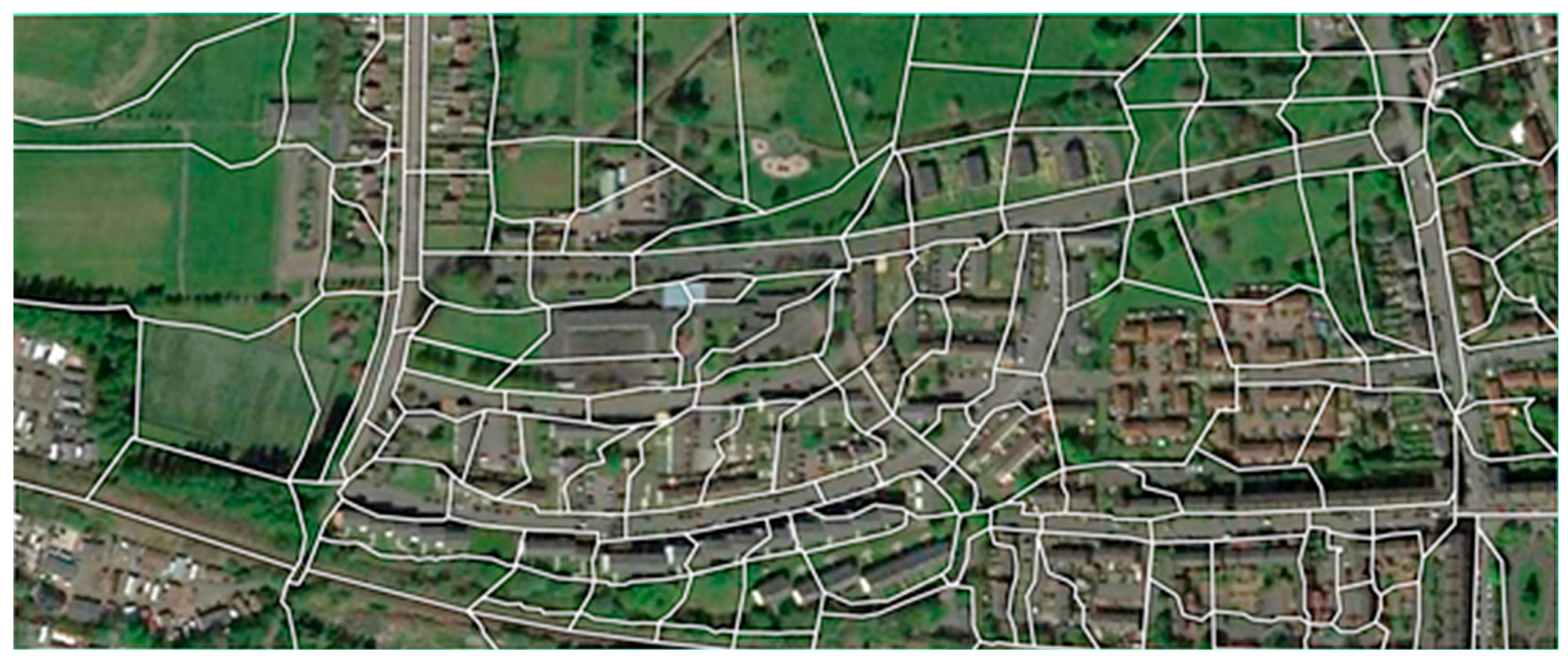

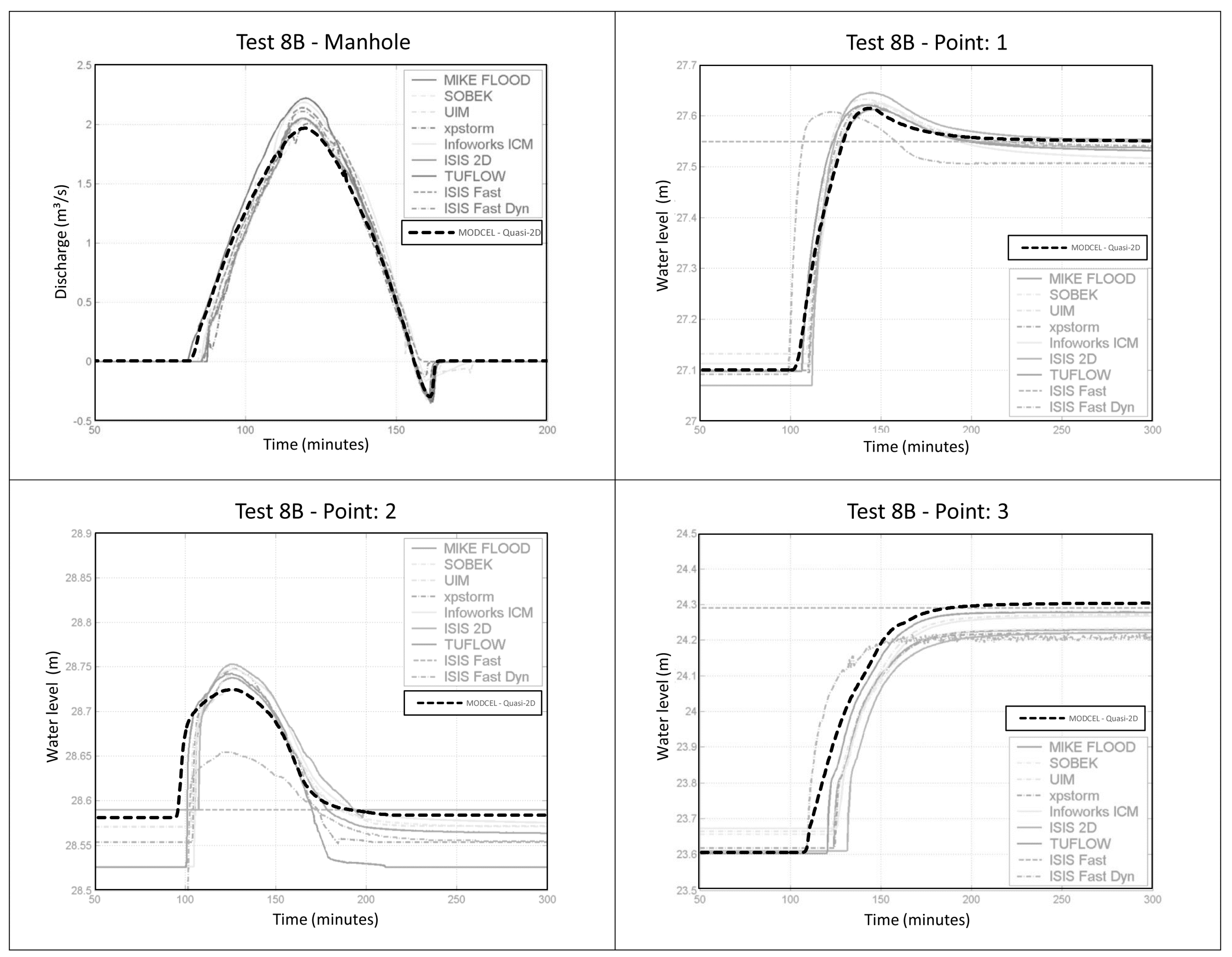
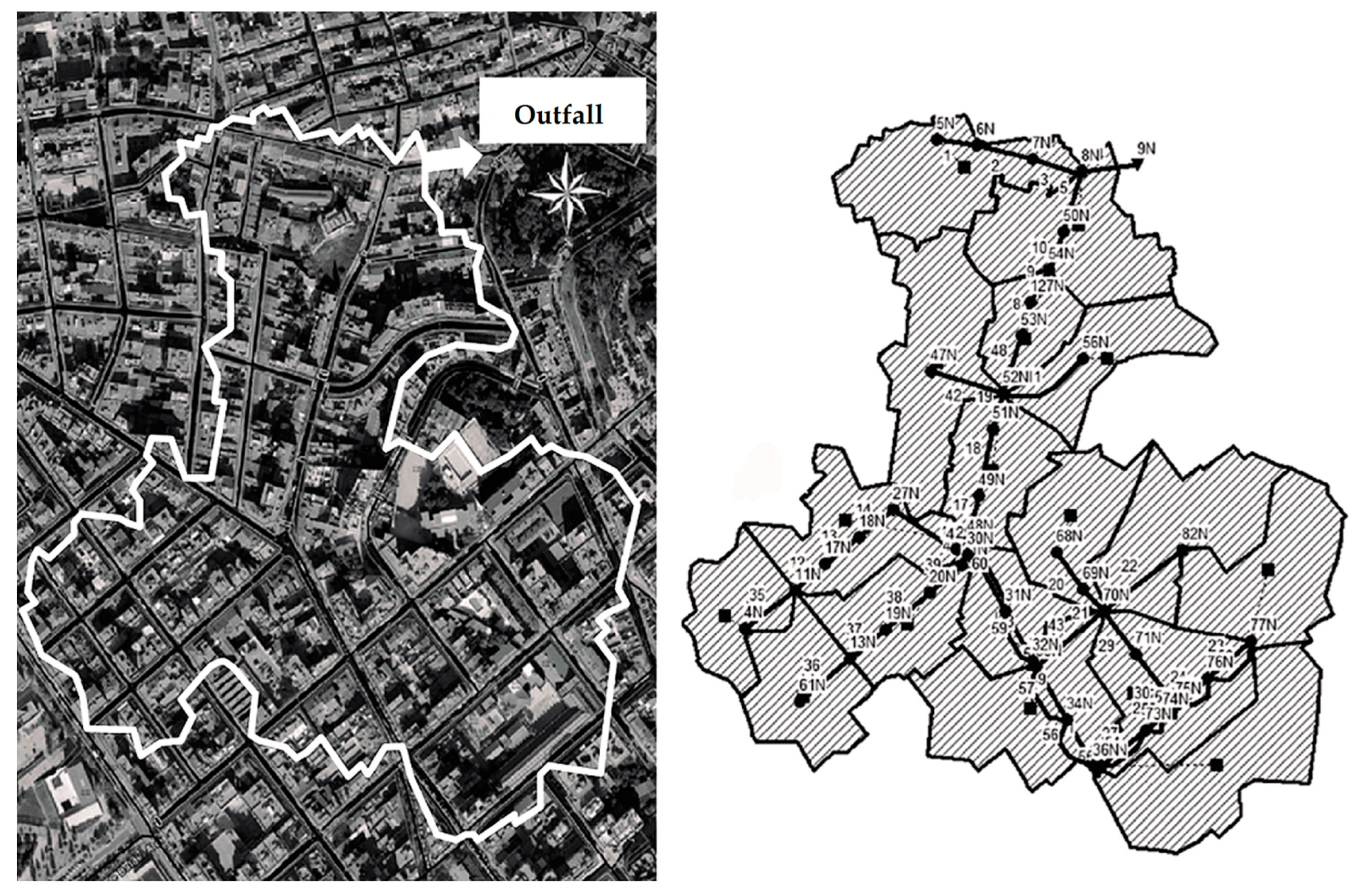
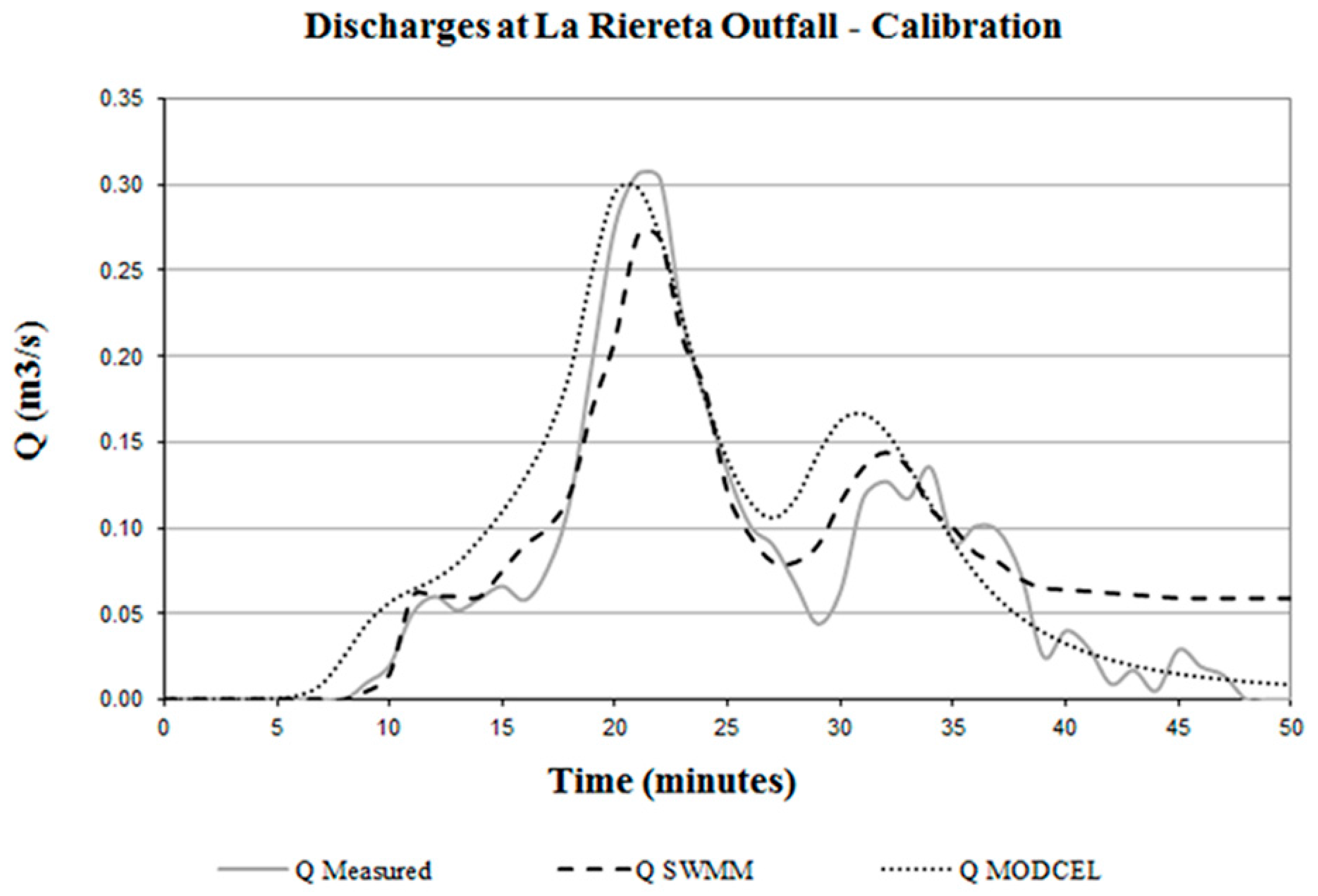
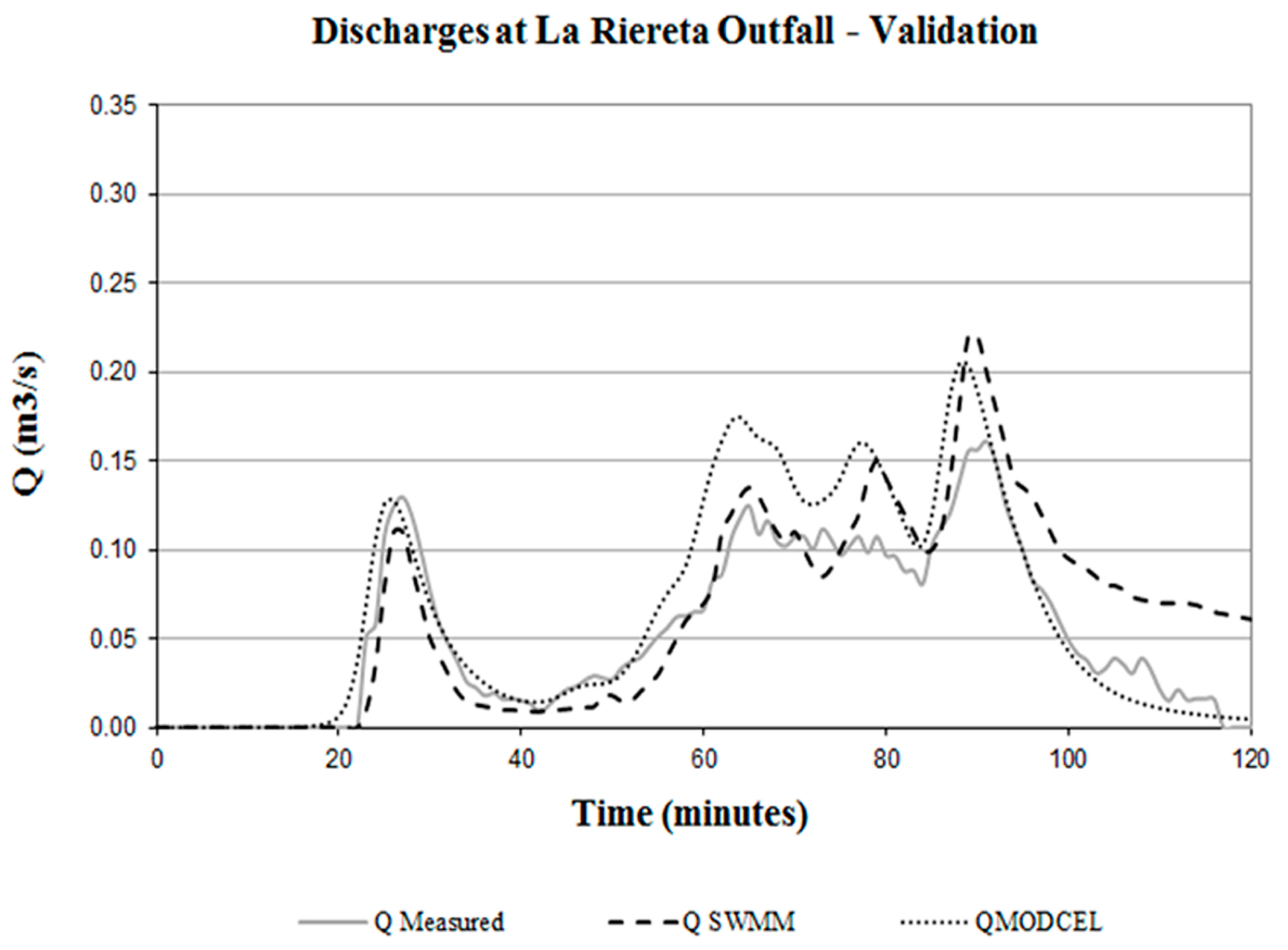

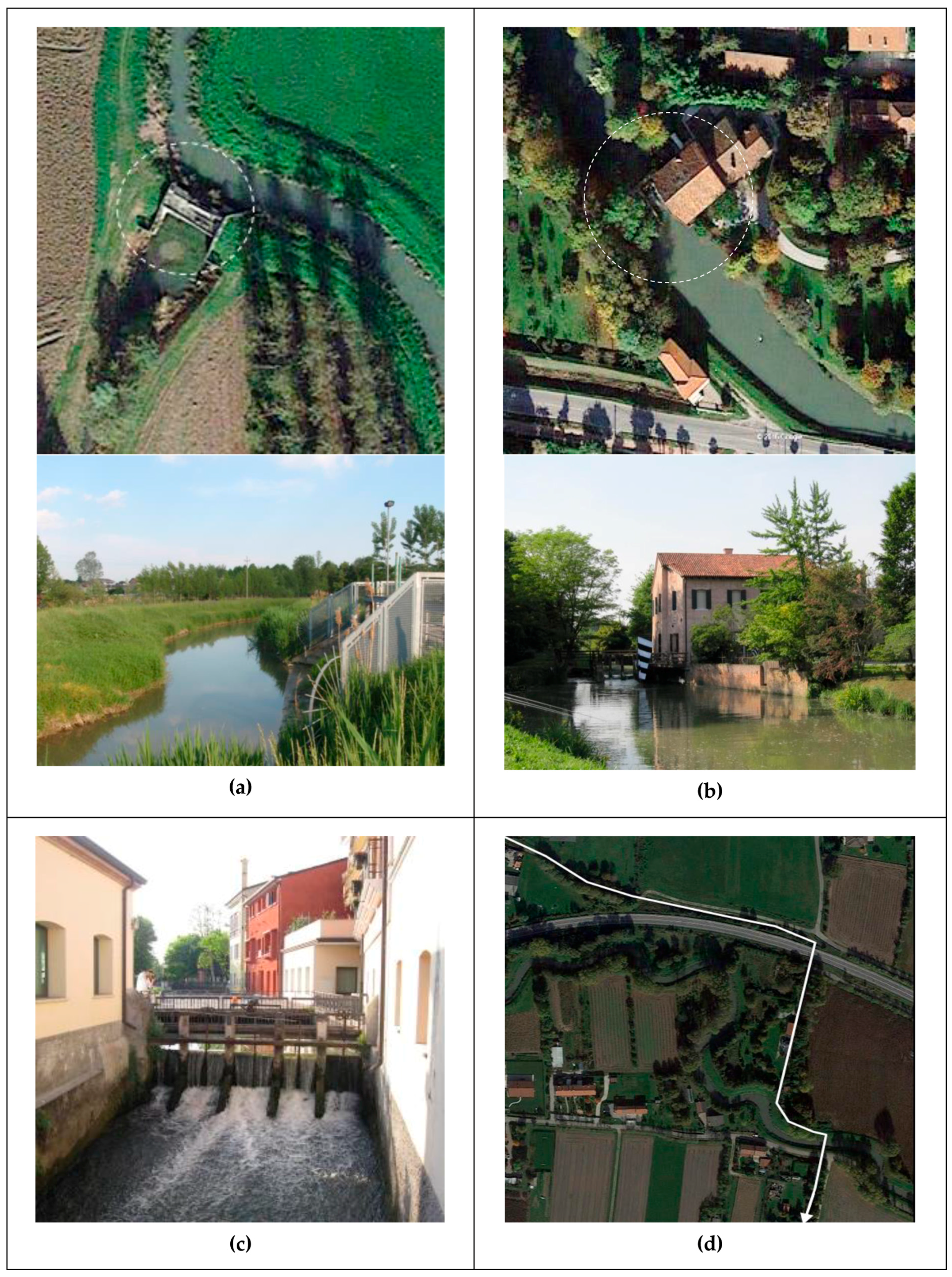
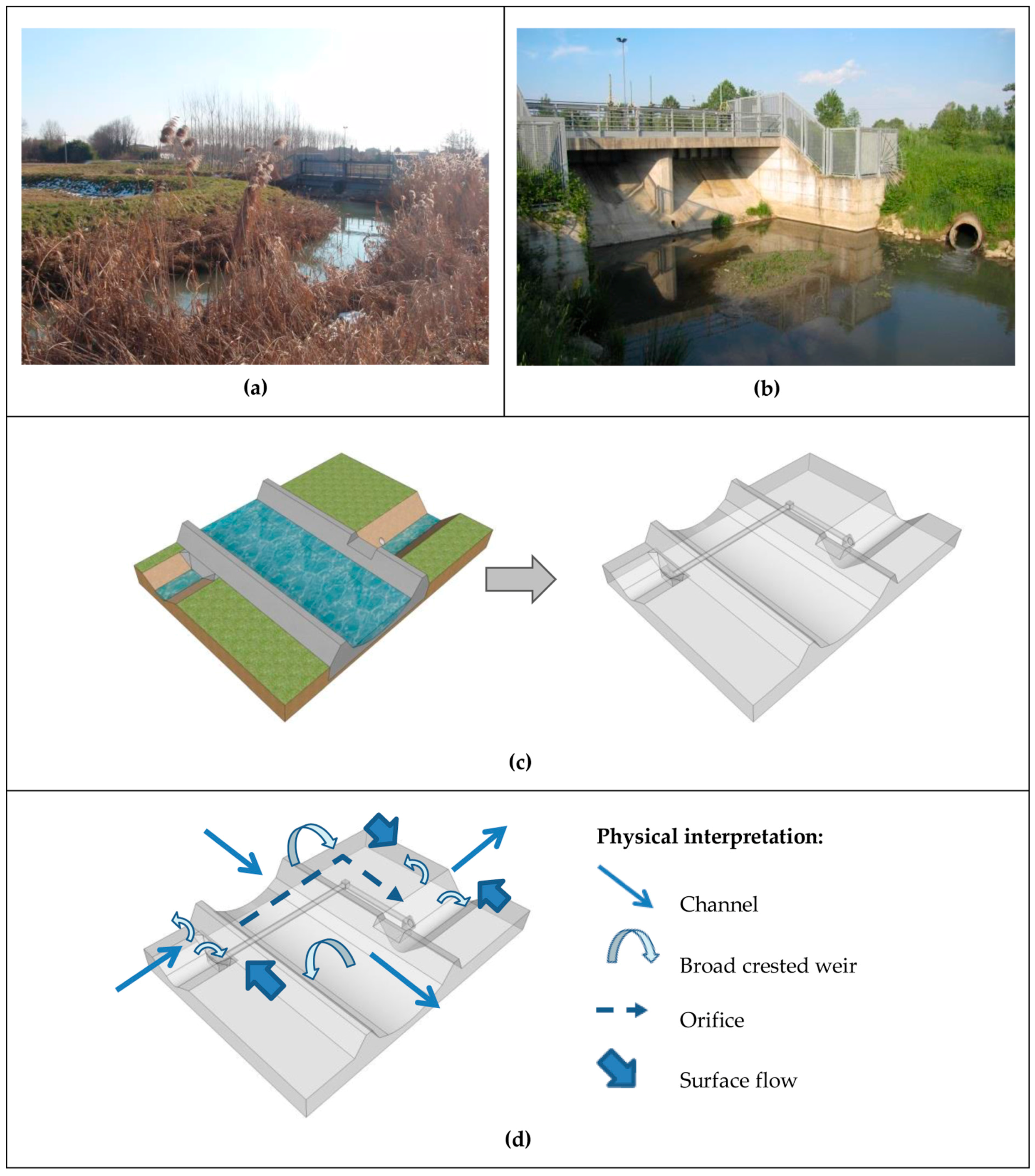
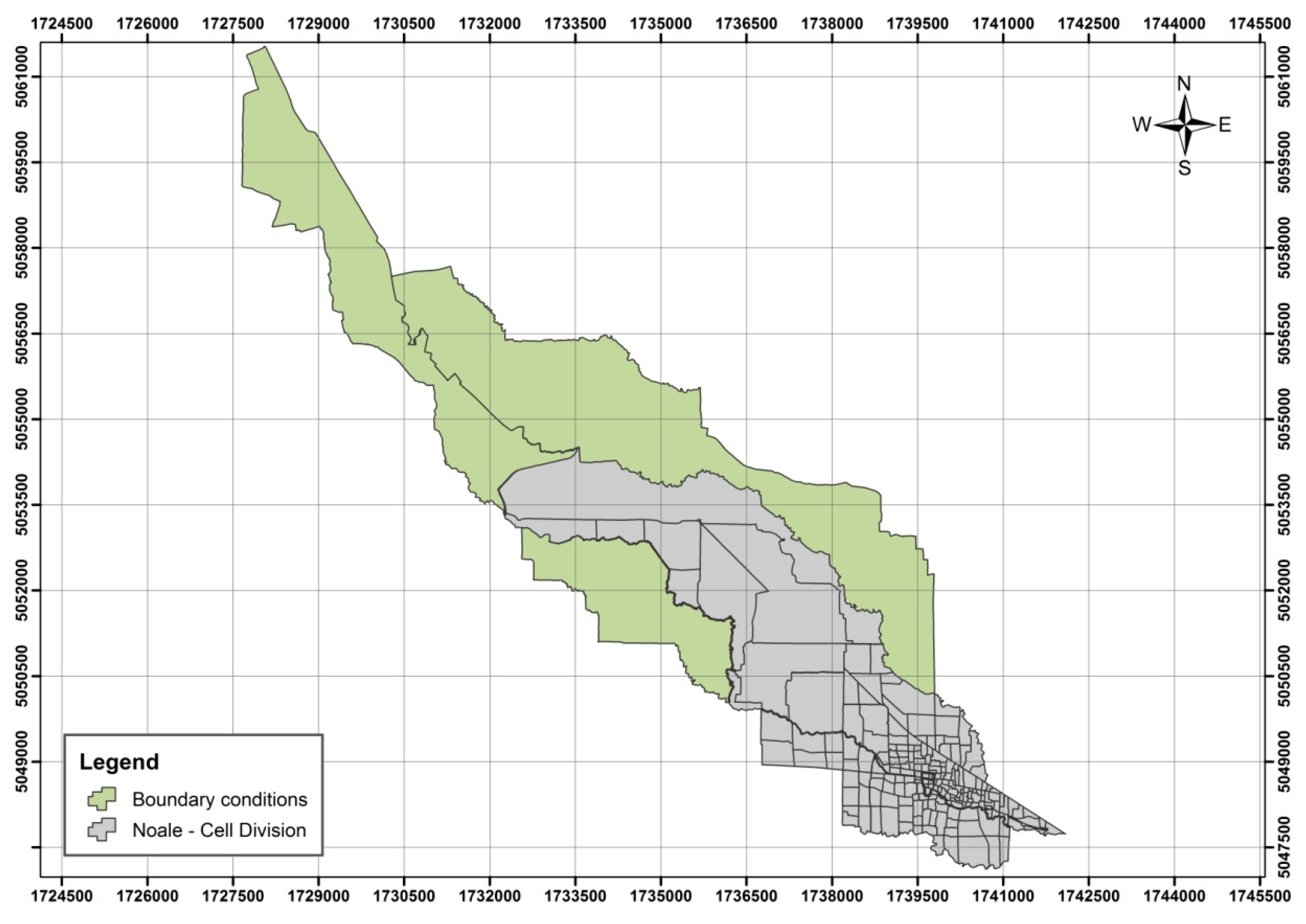


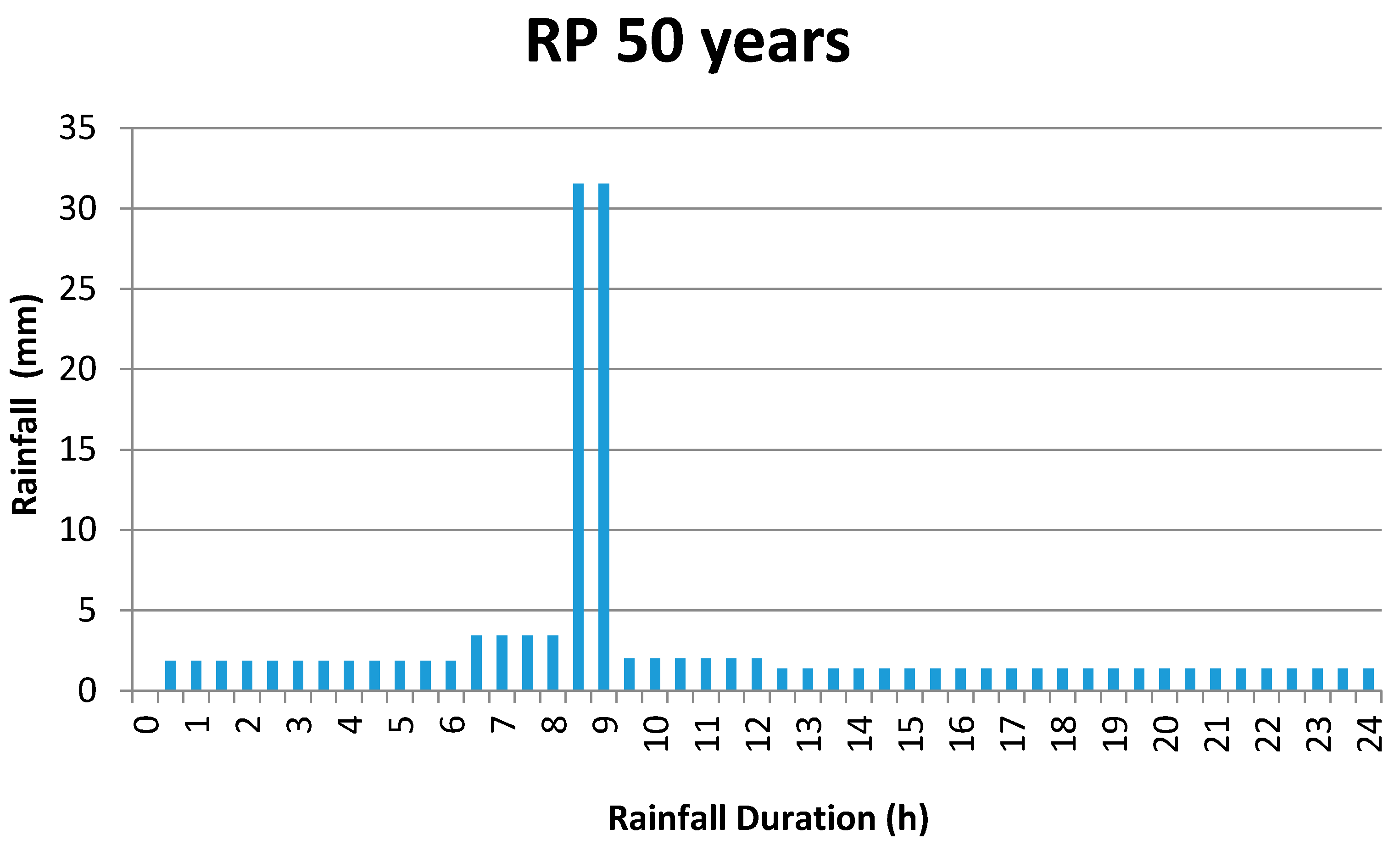
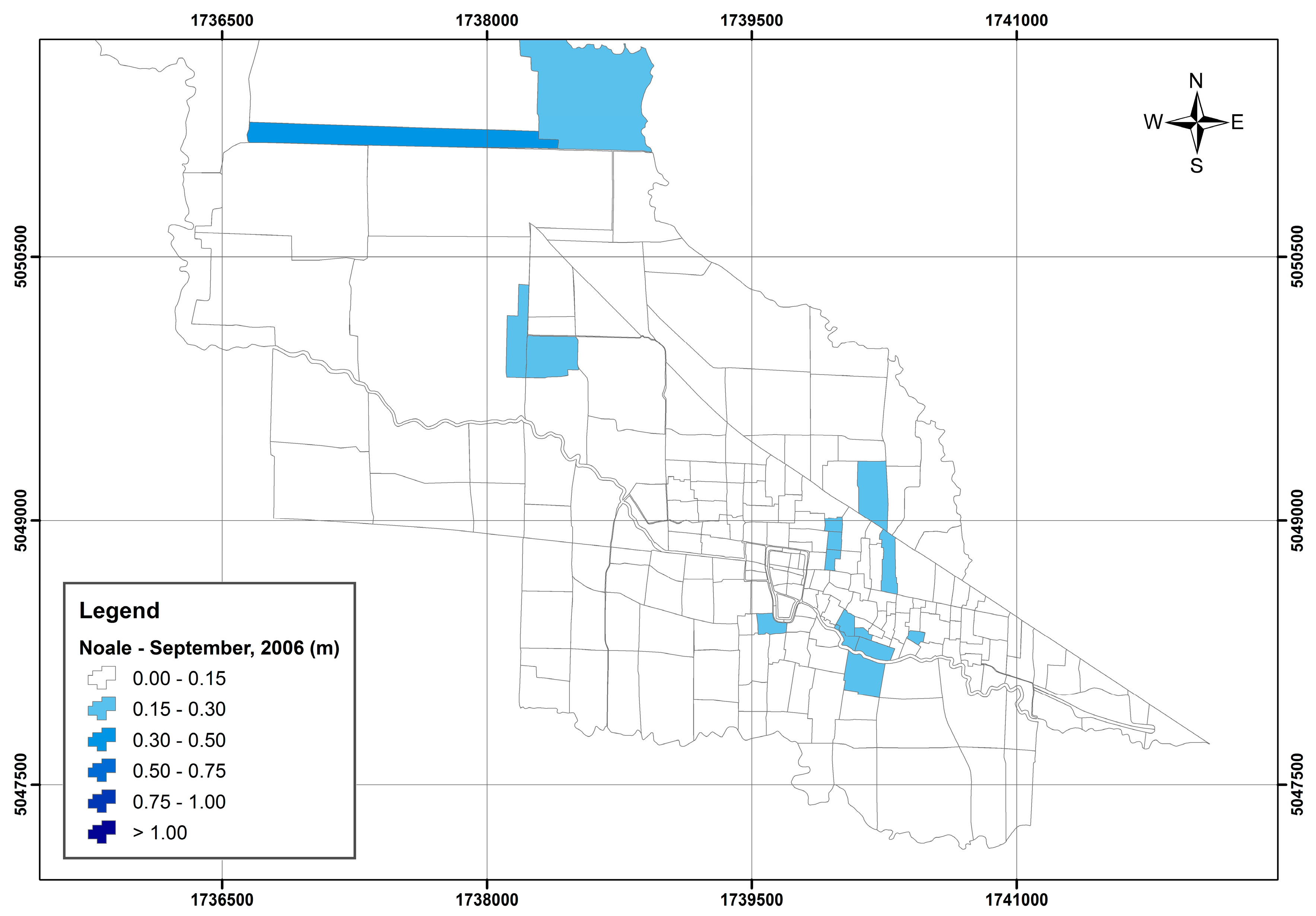
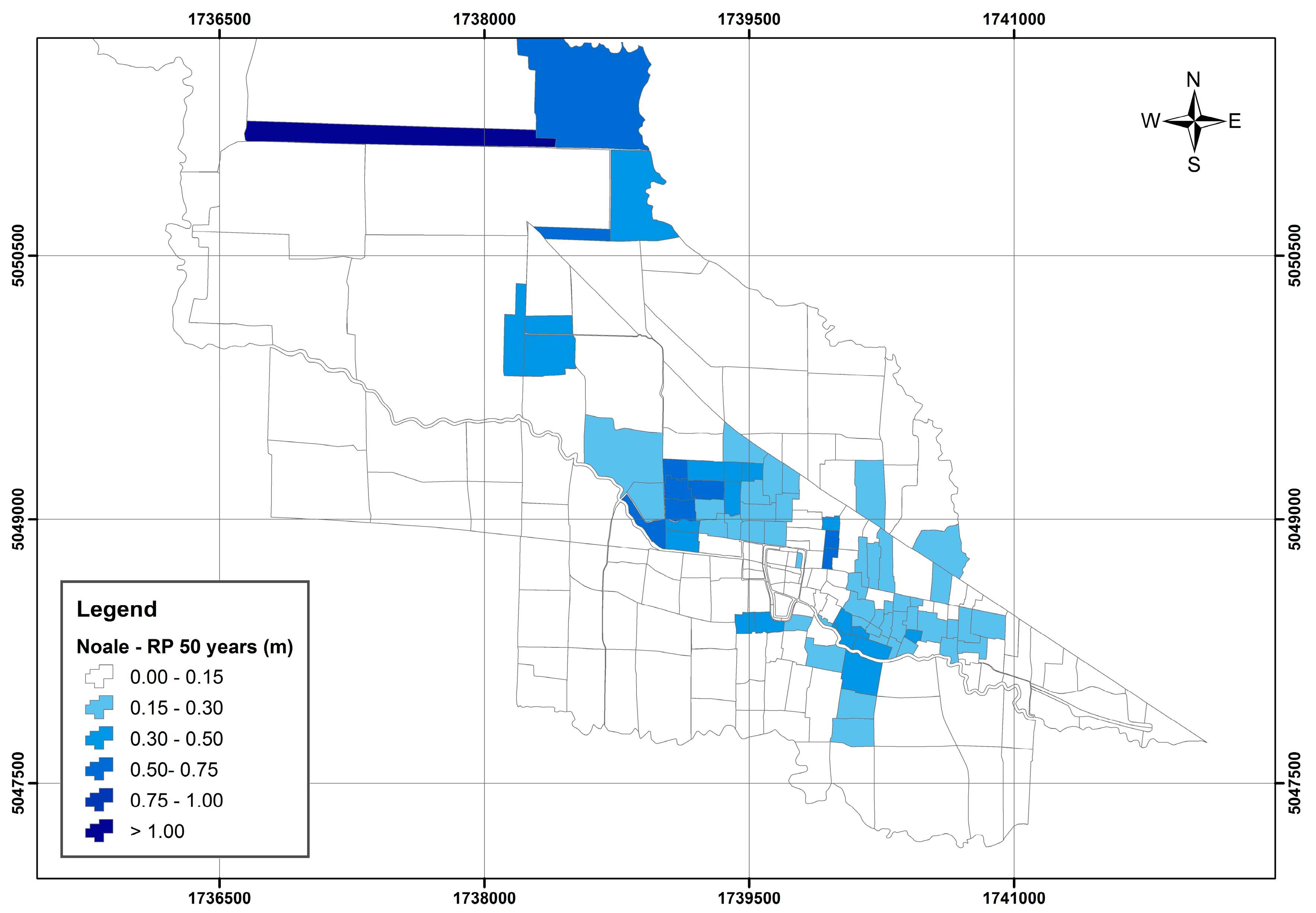
© 2017 by the authors. Licensee MDPI, Basel, Switzerland. This article is an open access article distributed under the terms and conditions of the Creative Commons Attribution (CC BY) license (http://creativecommons.org/licenses/by/4.0/).
Share and Cite
Gomes Miguez, M.; Peres Battemarco, B.; Martins De Sousa, M.; Moura Rezende, O.; Pires Veról, A.; Gusmaroli, G. Urban Flood Simulation Using MODCEL—An Alternative Quasi-2D Conceptual Model. Water 2017, 9, 445. https://doi.org/10.3390/w9060445
Gomes Miguez M, Peres Battemarco B, Martins De Sousa M, Moura Rezende O, Pires Veról A, Gusmaroli G. Urban Flood Simulation Using MODCEL—An Alternative Quasi-2D Conceptual Model. Water. 2017; 9(6):445. https://doi.org/10.3390/w9060445
Chicago/Turabian StyleGomes Miguez, Marcelo, Bruna Peres Battemarco, Matheus Martins De Sousa, Osvaldo Moura Rezende, Aline Pires Veról, and Giancarlo Gusmaroli. 2017. "Urban Flood Simulation Using MODCEL—An Alternative Quasi-2D Conceptual Model" Water 9, no. 6: 445. https://doi.org/10.3390/w9060445




